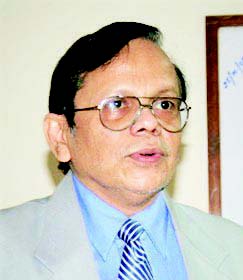
Binayak Datta
Last month, came the Election Manifestos, nearly a whole month after the Press Announcement of the Worlds’ biggest polls, just about 5 days prior to actual voting! I propose to take a look at the Manifestos of the two biggest National Parties, the hits, the misses and the questions I have.
To Recapitulate: The Election Commission, under directions of the Supreme Court had issued guidelines in 2016, for Manifestos, viz: a) The Manifestos should not conflict with the Constitution and the Model Code of Conduct and b) for reasons of Transparency, Equitability and Credibility, Manifestos shall setout: i) the Rationale for each Promise and ii) the Ways-and-Means of Funding these promises. We shall also look at compliance of these guidelines.
My take: Let’s take the BJP Manifesto first, the key promises of the current Manifesto and then, I’ll take a look at consistencies and outstandings with the previous two Manifestos in each area. The 76-page document is in an all-new format with trending tag-lines. It’s a set of 24 “Modi Ki Guarantees” with multiple Sub-Guarantees to each.
Before I come to the Guarantees, the page on achievements states, amongst various other achievements, 52% reduction in Left-Wing Terrorism and 71% reduction in insurgency-violence in the North-East; a remarkable achievement no doubt, but I found the Guarantee for the 48% balance in the first case, but not for the 29% outstanding actions in the 2nd, in the new Guarantees. Similarly, in “Bharat on the Global Stage”, particularly the one on Trading in INR, a line on the Rupee Depreciation is missing I found. I didn’t also find the 2019-manifesto-promise to make India a 5-trillion-dollar-economy by 2025 and 10 trillion by 2032 in this document.
Now, on to the Guarantees offered this time around!
The Guarantee for free rations for the next five years is excellent and a continuation from the Covid-Stimulus days, but in its current innings now, I miss both the rationale and the funding ways-and-means. In the free-electricity Guarantee, it’s good if it is managed totally thru incremental-roof-top solar-energy.
However, in the last Guarantee on developing Sustainable Cities, the 2014 Manifesto carried a Guarantee on building 100 new cities, enabled with the latest in technology and infrastructure. An updation would be good.
In the Guarantees for the Youth, I liked all the sub-guarantees mentioned – but I lack clarity on quantification of opportunities for employment and entrepreneurship segmentwise, say, Garments Industry, in Toys and Play Equipments, in Electronic Hardware and Component Manufacturing and in Tourism for example, for prioritisation.
The Guarantee for ensuring Senior Citizen-Friendly Public Infrastructure is particularly welcome, as most Railway Stations including Vasco, Karmali and Madgaon do not have full lifts and escalator facilities.
I liked the Guarantees for Farmers but I miss the point on Doubling Farm Income of the last Manifesto, in case it’s still outstanding. (Didn’t find it in achievements).
Under Guarantees to workmen, clarity on implementation of the Four-Year-Old “New Labour Codes” would have been greatly helpful, in my view.
Amongst the few brand-new Promises, the Guarantee on “elevating Bharat as a Global Soft Power” would be interesting to see how the implementation actually unfolds.
In Guarantees for Sports enablers, the Promise for hosting the Olympic Games in 2036 is excellent.
In the Good Governance Guarantees, I missed promises for Big-Bang Structural Reforms eg. in Civil Services, in Police, in Judiciary and in Cooperative Federalism promised in the last manifesto but still awaited. Similarly, I missed the NRC, promised in the 2014 Manifesto. A promise on tackling Inequality would be an excellent proposition, missed! The Guarantee on actions on “One-Nation-One-Election” appeared in the last manifesto 2019 as well, what I didn’t find this time is the rider “We will try to build consensus on this issue with all parties”.
In the Congress Manifesto, The “Nyay Patra” (48 pages), is also new in its concept. The Manifesto speaks of Promises for Equity, for Youth, for Women, for Farmers, for Workmen, for defending the Constitution, for the Economy, for Federalism, Promises on National Security and
for Environment.
In the Introduction, there is a Promise of “Doubling the Economy” in 10 years. As usual debates trigger on numbers, so the Old & New GDP “Series”, “Current and Constant Prices” leaving the voter nonplussed!
The promise for recognition of civil unions for the LGBTQIA+ community looks laudible in itself but opinion building and consultation processes could have
started by now.
The Promise on recruitment to 30 lakh vacancies in sanctioned Government posts is excellent, but shouldn’t there be an Industrial Engineering exercise first, whether those jobs still exist in the current IT enabled ambience? A proper rationale and the ways-and-means are missing.
The Manifesto promises an Apprenticeship Program with a stipend of 1 lakh a year whilst learning. Again, where’s the Ways-and-Means statement.
For women, the Promise for a Direct Cash Transfer each year of 1 lakh to one senior woman in a poor family is good to have but how much would it total to and what about the ways-and-means?
Farmers promised a Legal Guarantee for MSP calculated in terms of the Swaminathan Committee recommendations, but what would be the Financial consequences?
There’s the promise for Women’s’ Reservation in Legislatures to be done right away in steps (not await the delimitation exercise). There is a promise also for 50% of Central Government jobs to be reserved for women. Great promises!
The 26 Promises under the Chapter “Defending the Constitution” are all welcome, a special note on the promise to ensure disclosure of ownership pattern by media-houses.
Worldwide: In most multi-party democracies, Manifestos (eg in UK) or Quadrennial Party Platforms (as in the US), play significant roles in elections. These policy documents are generally debated and negotiated over protracted periods of time and finalised. Subsequent actions of the executive are generally matched with this reference.
And before I part, electing a Government is the function of People and it’s only in the fitness of things that people know exactly what they elect. Manifestos are then serious!
(Binayak Datta is a finance professional)
